Last updated on March 15th, 2022
Our site is reader supported, this means we may earn a small commission from Amazon and other affiliates when you buy through links on our site.
Summer flowering bulbs are a wonderful addition to your garden because they don’t need a lot of room to grow but can still offer masses of flowers. There are many types out there that can be interspersed with any other flowers you have, to really round out the blooming period. Regardless of the type, remember that summer flowering bulbs need to be planted in spring right when the weather gets warmer, especially tender varieties.
How to Plant Summer Bulbs
Choosing good quality bulbs
When you are ready to plant your summer bulbs, you want to get them as fresh as you can. You should be able to find them on sale from the start of spring and onwards when the bulbs are dormant. The healthy bulbs will have no real signs of damage or mould and they should be nice and firm. The bigger they are, the larger the blooms will be, so take that into consideration when you pick options for containers or borders.
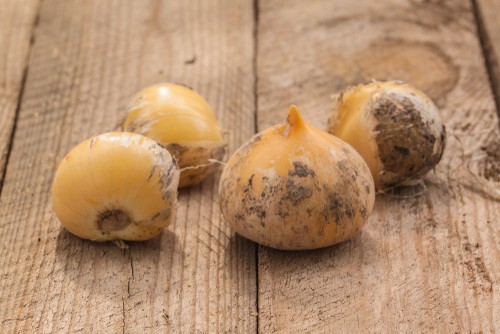
Check out my guide on how to use a bulb auger to plant bulbs quickly here.
When to Plant
Summer bulbs need to be planted in the spring, right when your soil begins to get warm and shake free the thaws of winter. The best conditions are soil temperatures around 13 degrees C. If the soil is any colder, the bulbs won’t grow properly and could rot so be careful not to plant them too early.
You want to plant them right after you buy them, so don’t buy the first set of bulbs you see in spring only to wait another two months for the soil temperatures to get where you need them to be.
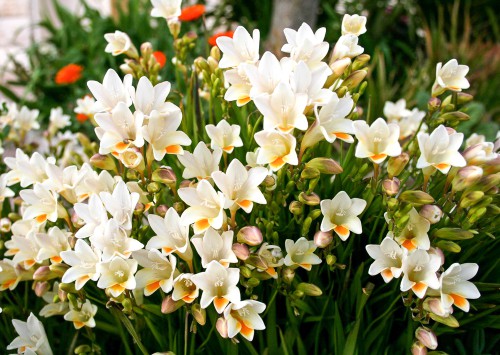
If you have bulbs you stored over winter, you should plant them at the end of their dormancy.
Soil type and planting position
The soil type required for the bulbs is contingent upon the varieties you have. But most of the time summer bulbs need warm, sunny positions with full sun or partial shade and well-draining soil. If the drainage is insufficient it can lead to rot. To improve drainage you can add well-rotted matter or mix in grit for containers, or even dig some grit into borders to improve drainage before planting if needed.
If you have heavier, clay soil it will help to add coarse sand, one or two buckets worth for every square metre in your garden.
How deep to plant summer bulbs
The depth is based on the type, but as a rule of thumb, you want the bulb to function as your guide. As with most bulbs, the spacing should be two to three bulbs deep and wide between multiple bulbs.
When it comes time to plant, you should dig individual holes for the bulbs, or if you are growing a handful at once dig a trench for all of them. The trench method is better suited to planting rows or in hedges. In any case, you want a hole adequately deep so that you can put the bulbs in gently without having to push them in hard.
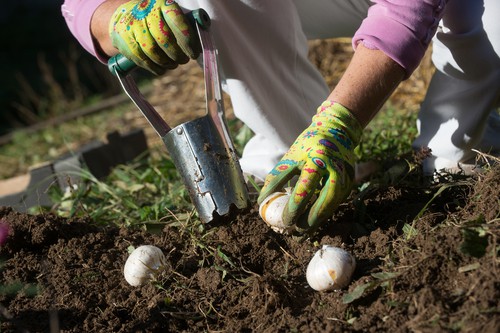
That done, be sure to place the bulbs pointing upward before you cover them with soil and pat them down gently and lightly rake over them.
If you are growing in pots, you can put them right in the border where you want the bulbs to flower, just make sure you have a hole that is wide and deep enough to accommodate all of the roots you are planting.
Storing Summer Flowering Bulbs
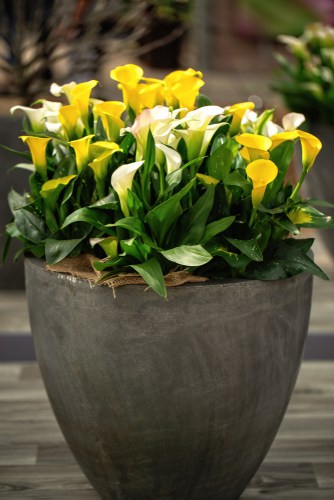
Many summer bulbs are wonderful when grown in containers and can be easily lifted over winter and stored in preparation for the next summer.
If you plan on doing this, be aware that the bulbs like being stored dry to prevent them from rotting. Remove the bulb before the first frost and get rid of any loose soil. Pull off any dead leaves and let them dry overnight. You can dust the bulbs with a fungicide, such as yellow sulphur, to help them remain healthy, after which you can store them in trays of dry sand or inside paper bags.
A few of our Favourite Summer Bulbs to Grow
Alliums
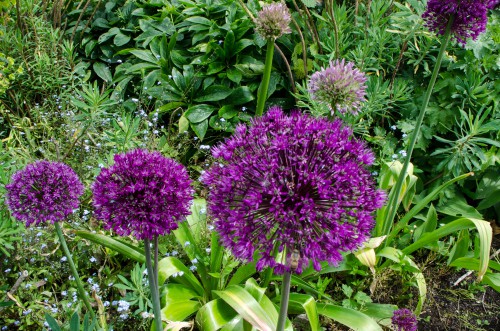
There are many types of summer bulbs to grow in your garden. Alliums bring large, purple, spherical blooms that sit on top of upright stems. They will do well in borders, especially mixed with lower growing perennials. There are a few varieties, some have small round flowers while some have very large flowers, even as large as a baby’s head! Once they finish flowering the leaves look a little unsightly so it’s best planted amongst other plants to hide the foliage and distract from them. The flowers though are absolutely stunning.
Oriental and Patio Lillies
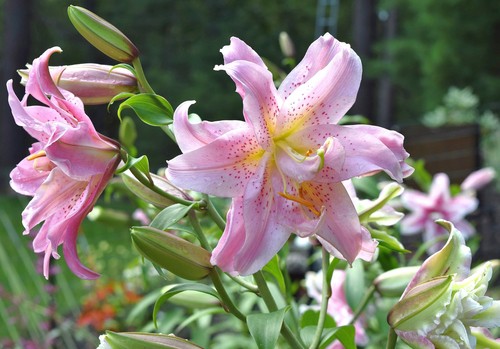
The Oriental Lily is one that brings a beautiful fragrance and rather eye-catching blooms. These Lillies are easy to grow and have exotic blooms, but be careful to avoid the pollen stains and watch out for little red lily beetles that love to eat the leaves.
Non-stop Begonias
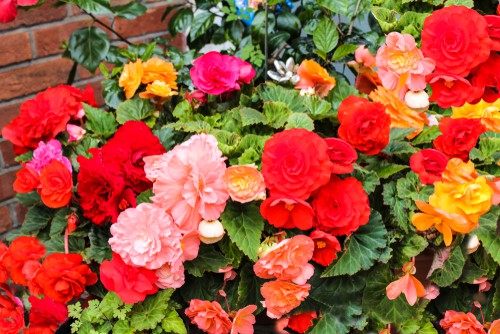
Non-stop Begonias can add bright accents and they bloom from summer through until the first frosts, making them perfect for borders, window boxes and containers where their long-blooming colour can be fully enjoyed. Some varieties even come with delightful fragrances, perfect to hang above a patio seating area or near your back door. You can usually buy these as growing planting and then you can overwinter the corms by lifting them and planting again in spring.
Freesias

Freesias have arching stems with fragrant blooms too. They are good for planting in milder areas of the UK.
Gladiolus
Gladiolus produce a wonderful ruffled bloom mixed with a majestic stem. No summer bulb exudes elegance quite like it.
Polianthes tuberosa
If you want waxy blooms and the temperatures are warm enough, the Polianthes tuberosa is great, but it does take a bit more effort than most and needs temperatures of at least 15 degrees C outside.
Crocosmia
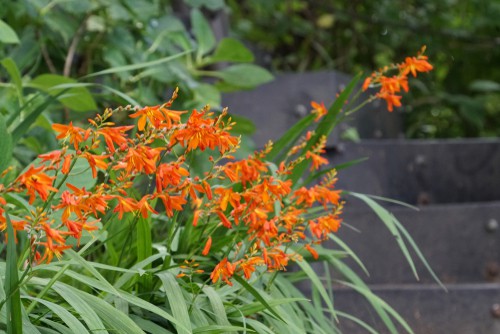
To fill space quickly, the crocosmia will multiple and meander through your garden unhindered. Moreover, they will add vibrancy with their red, orange, and yellow floral options.
Fireball Lily, or Scadoxus
The fireball Lily or Scadoxus has spherical flower heads ideal for patio containers, but this one too is a lover of warmer temperatures so protect them from frost.
Bearded Iris
Classic cottage themes will love the ruffled blooms of the Bearded Iris and the light fragrance too.


